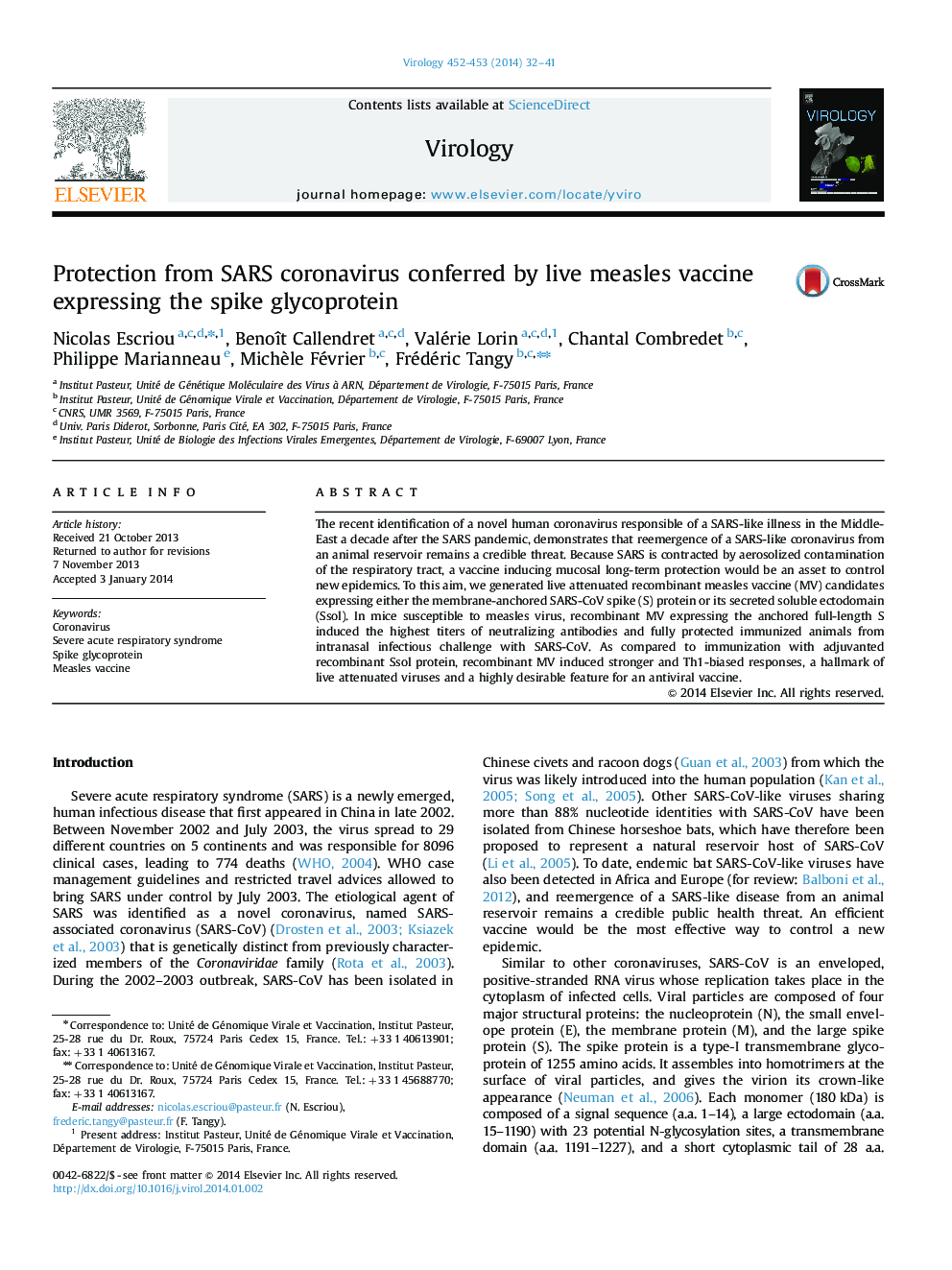| Article ID | Journal | Published Year | Pages | File Type |
|---|---|---|---|---|
| 6140232 | Virology | 2014 | 10 Pages |
Abstract
The recent identification of a novel human coronavirus responsible of a SARS-like illness in the Middle-East a decade after the SARS pandemic, demonstrates that reemergence of a SARS-like coronavirus from an animal reservoir remains a credible threat. Because SARS is contracted by aerosolized contamination of the respiratory tract, a vaccine inducing mucosal long-term protection would be an asset to control new epidemics. To this aim, we generated live attenuated recombinant measles vaccine (MV) candidates expressing either the membrane-anchored SARS-CoV spike (S) protein or its secreted soluble ectodomain (Ssol). In mice susceptible to measles virus, recombinant MV expressing the anchored full-length S induced the highest titers of neutralizing antibodies and fully protected immunized animals from intranasal infectious challenge with SARS-CoV. As compared to immunization with adjuvanted recombinant Ssol protein, recombinant MV induced stronger and Th1-biased responses, a hallmark of live attenuated viruses and a highly desirable feature for an antiviral vaccine.
Related Topics
Life Sciences
Immunology and Microbiology
Virology
Authors
Nicolas Escriou, Benoît Callendret, Valérie Lorin, Chantal Combredet, Philippe Marianneau, Michèle Février, Frédéric Tangy,
